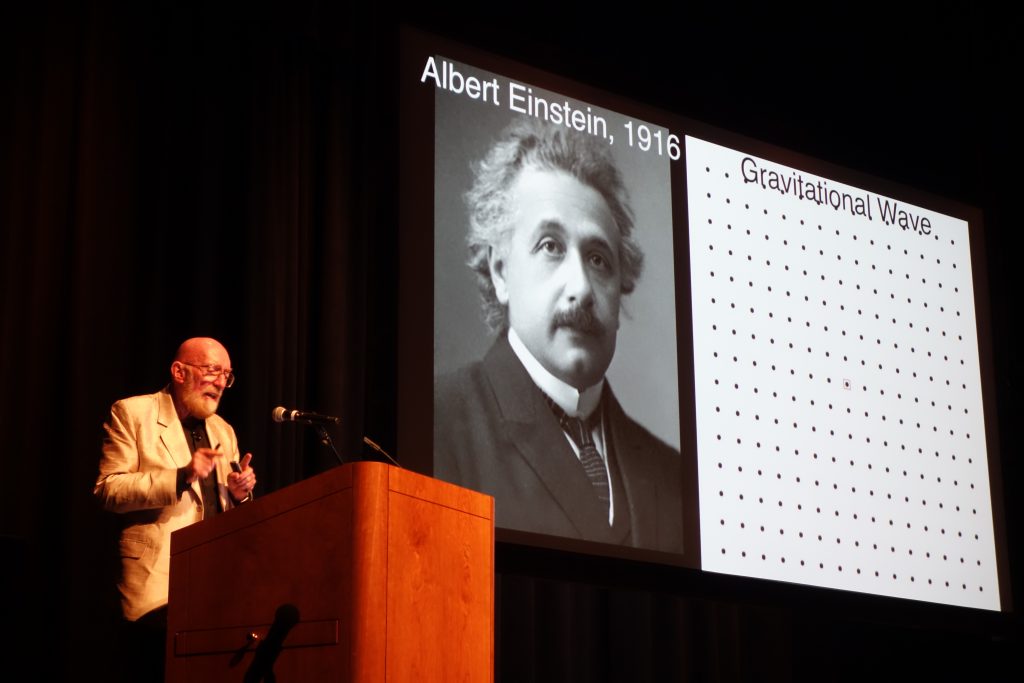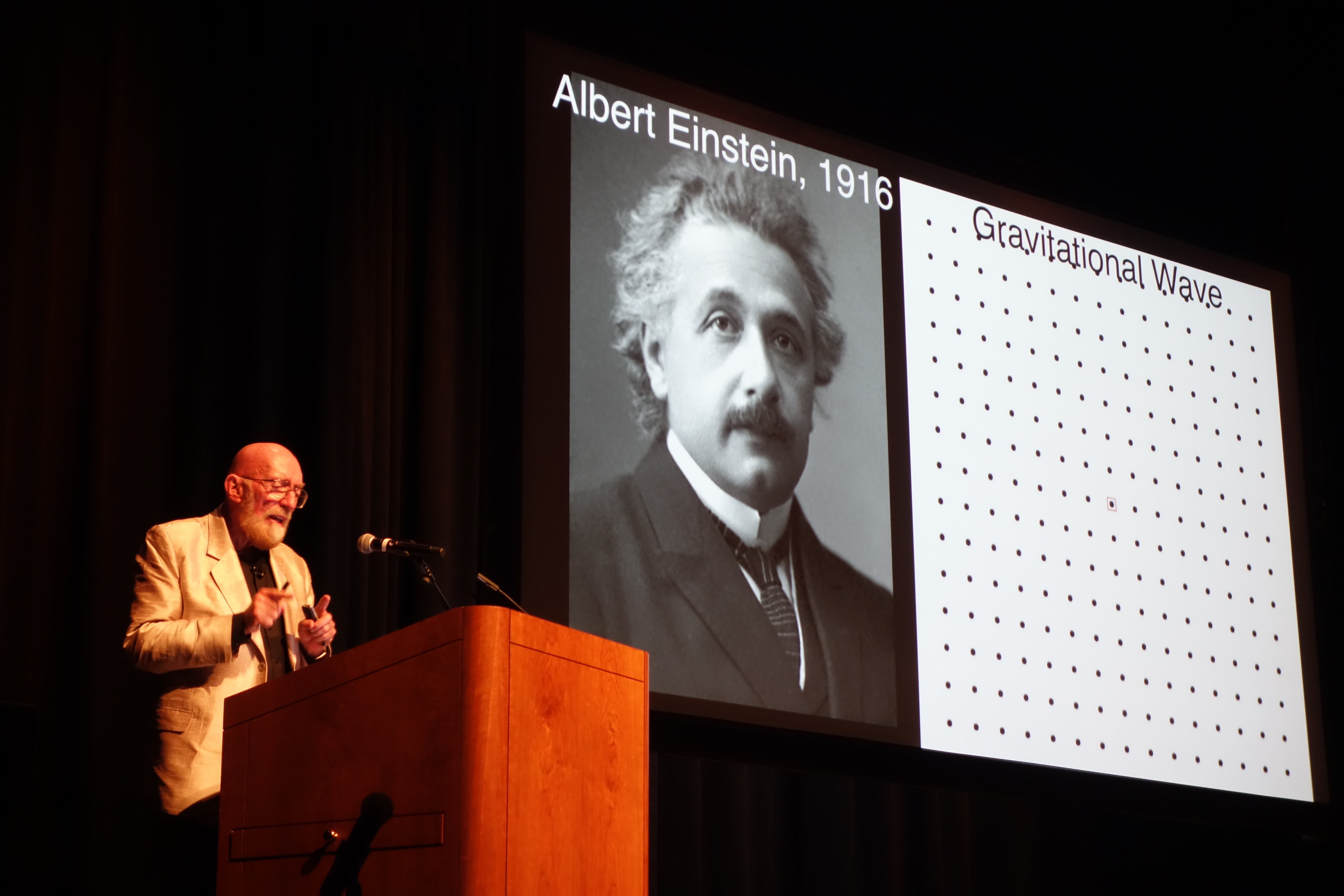
Dr. Kip Thorne showed a slide of two people on a New York City subway, sitting in front of a poster by Manhattan Mini Storage. It reads “Scientists found gravitational waves in outer space. If only it were that easy to find an apartment in NYC with a walk-in closet.”
The audience at the University of Texas got a great laugh out of that but as everyone knows it was anything but easy to detect those waves. Thorne’s talk offered a survey of the decades of effort he put into the search, which was crowned with success in 2015. He explained very simply what gravity waves are: “the oscillations of the fabric of spacetime itself.”
When he saw evidence for the waves, Thorne said they “were stronger than we expected for a first detection. I could hardly believe it was real. It took 5 months for a thousand scientists in 18 nations to confirm the detection.”
Throughout his address, Thorne paid tribute to the work of Dr. Cecile DeWitt-Morette, who was a professor at UT. She died just last year. Thorne said she established a summer school in theoretical physics in 1951 in Les Houches, France. It was there in 1963, he related, that “I became a real convert to the science of gravitational waves. I began to build a theory group at Caltech on black holes and gravity waves, and in 1972 I was back in Les Houches lecturing on black holes.”
Thorne was one of the three leaders that created the LIGO project in 1981, the very project that eventually found the waves in 2015. Thorne thinks of it not so much as a machine as a living thing. “I was rather like Dr. Frankenstein who built this creature and only later found the personality of his creation.”
So far six gravity waves have been detected. Within the next decade, even more advanced detectors promise to let us observe a gravity wave every hour. Since only electromagnetic radiation and gravity waves can propagate across the entire universe, this opens up tremendous possibilities to explore.
While still highly theoretical, Thorne said “gravity waves at high frequencies could travel from one universe to another. That is the model that underlies the movie Interstellar.” Yes indeed, gravity waves are now the driver of pop culture!
